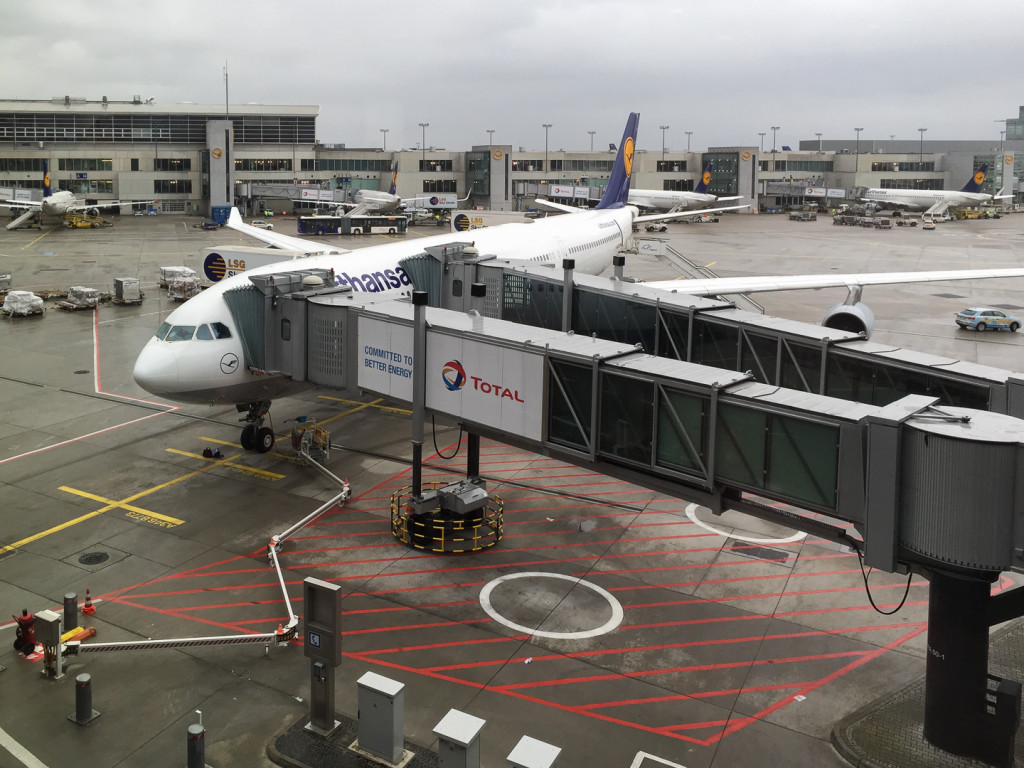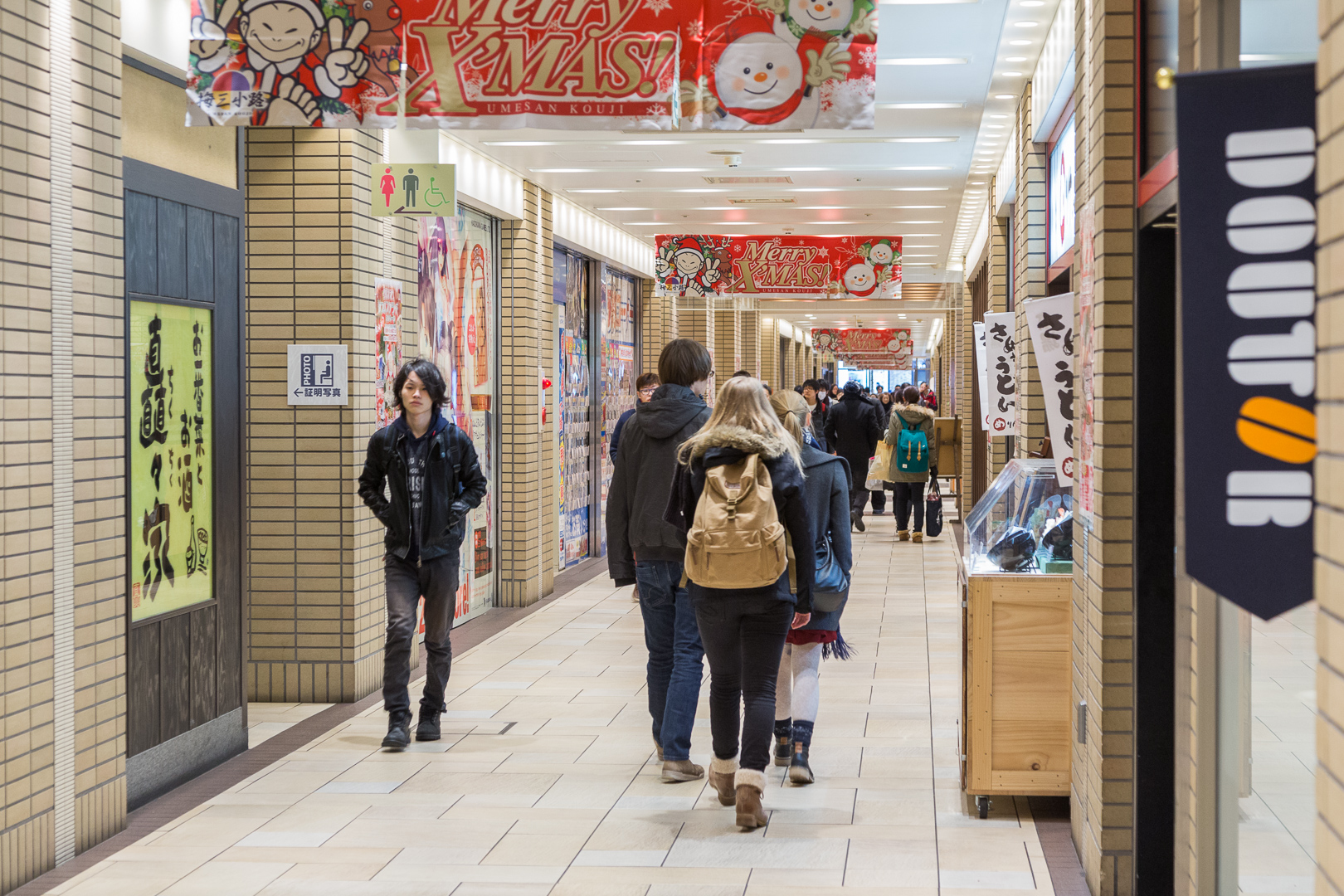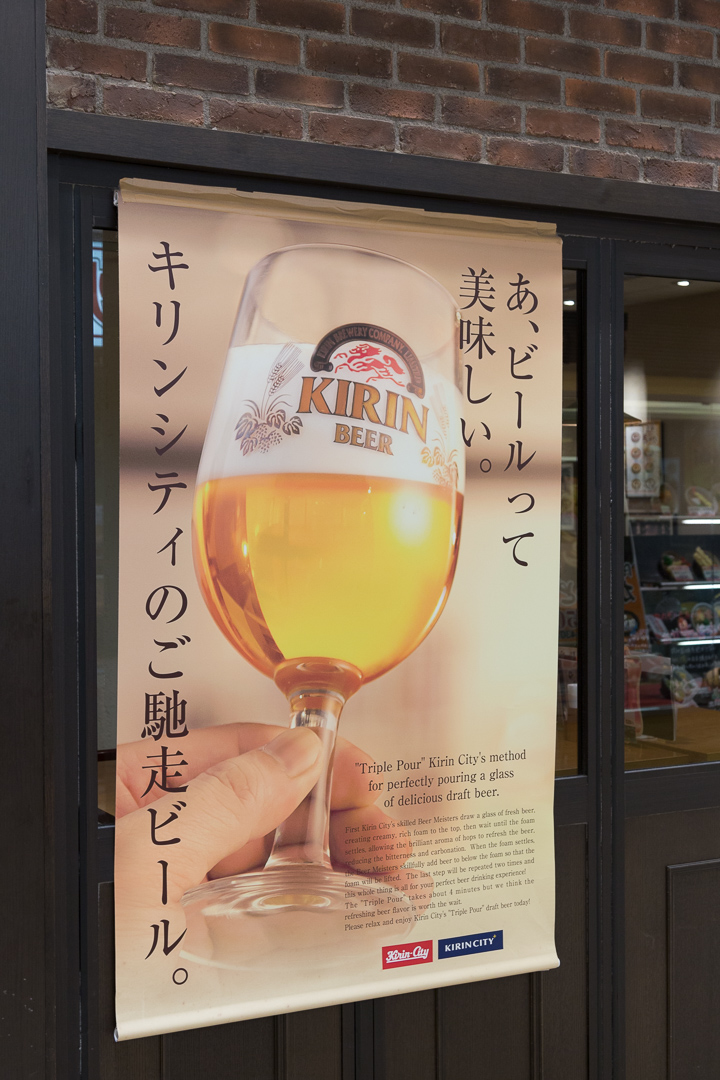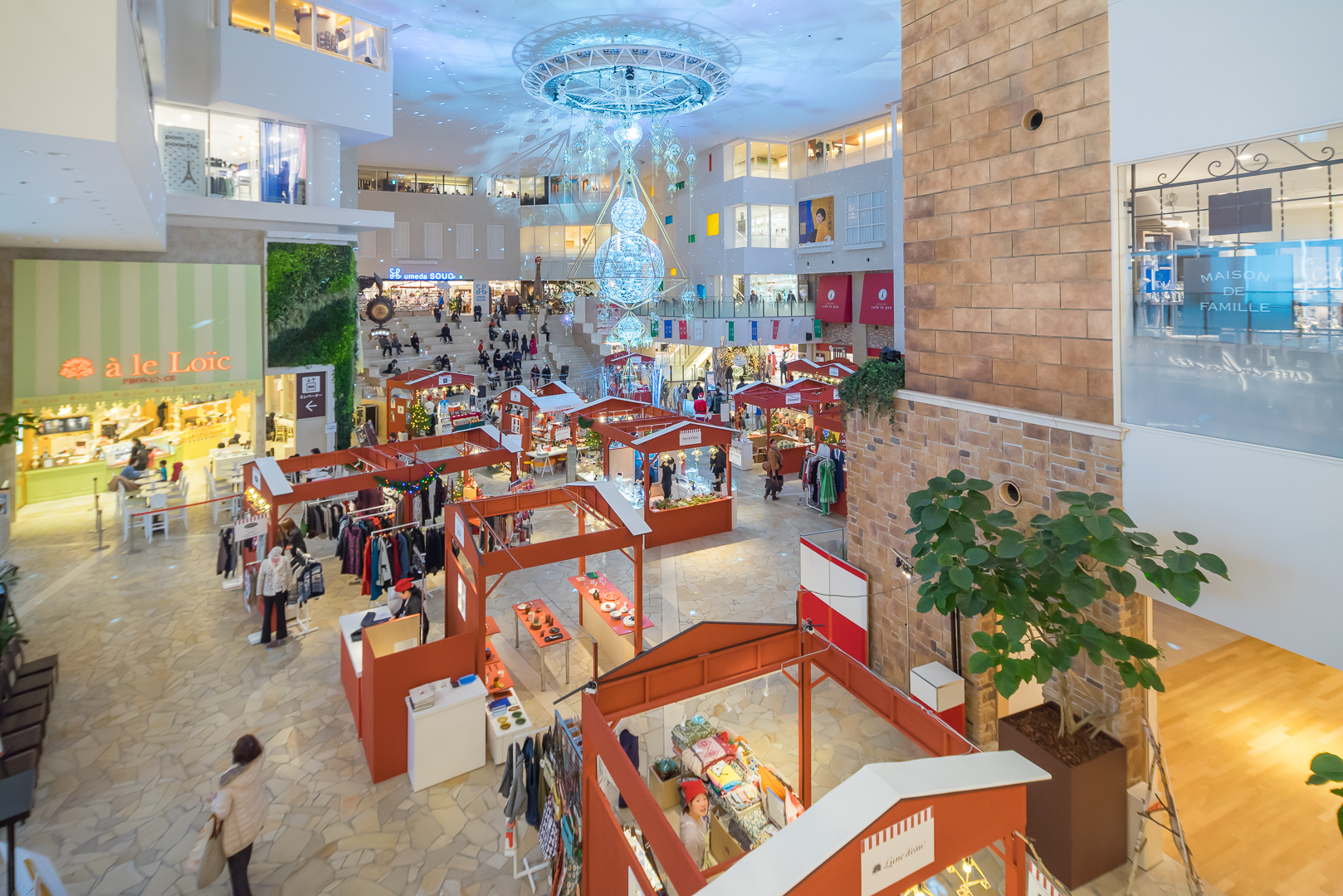
The journey starts
(December 20th to 21st, 2014)
Japan! That was a destination we had in our minds all along. An opportunity arose, when our older daughter completed a 3-month internship at a company in Osaka as part of her mechanical engineering university studies in Japan. We decided to “pick her up” there after this and to travel together through Japan for 2 weeks. So on December 20th, 2014 we flew to Osaka with 5 people (including the grandmother who had organized the trip) to pick her up.
Just at the beginning of our journey we already got the first excitement. Still in the taxi to the airport, we got the message on our mobile phone that our KLM shuttle flight to Amsterdam, which was scheduled for 11:30 am, was cancelled. From Amsterdam we should continue our flight non-stop to Osaka. But once we arrived at Düsseldorf airport, fortunately everything went fine. The lady at the KLM counter had already rebooked us to Lufthansa. The flight went now via Frankfurt. Thank God we arrived at the airport very early (my wife always likes to be there very early!), because Lufthansa departed a bit earlier than KLM.


So we were already sitting in the plane a short time later. The changeover in Frankfurt was without complications, the subsequent flight to Japan was very smooth. The landing approach to Osaka is awesome: you fly along the whole Japanese coast for a long time. The airport itself is built on a deserted island in the sea, a dam leads to Osaka on the Japanese main island Honschu. Because of the time difference of 8 hours, we landed after a flight of about 11 hours in the morning of the 21st of December around 9:20 am. The entry formalities were done quickly, there were only few people waiting at the immigration desk for “foreigners”.
Osaka is with a population of about 2.7 million the third largest city in Japan, a traditional commercial center and also one of the major industrial centers. The port is one of the most important in Japan.
We were picked up at the airport on time in a minibus (grandma had organized the trip really very well). After a one hour drive, we reached our hotel (Hearton Hotel Nishi Umeda) in downtown Osaka.
Our daughter joined us shortly afterwards and after a long and warm welcome we first explored the immediate surroundings. She already knew the area well and led us to a passage in the subway, where we could eat and drink something. There are huge underground malls at the stations with many shops and restaurants. Even in Japan everything was decorated for Christmas:




Already during the first exploration we felt exotic in the crowd of Asians. In Japan there are only very few Europeans, you rarely see others. Especially our two fair-haired daughters were always noticed with interest.
Pictures of the food hang in the windows of the restaurants or there are amazingly real-looking plastic food imitations. In Germany, this would not be so inviting, but in Japan it is common and it was very useful for us. So we knew roughly what to order. But you have to be careful: not everything that looks like vanilla pudding tastes as one, as we were surprised to find out. 😉
We soon discovered that you can’t read anything at all. It is surreal: at first sight, Osaka is a modern metropolis with skyscrapers, neon signs and a lot of hustle and bustle and you feel at home. It seems like any other big city like Paris, New York or Hamburg. But if you take a closer look, you can’t decipher anything on the billboards except the well-known brand names (Sony, Toyota etc.). Rarely is something explained in English. Our daughter speaks a little Japanese, but her language skills were for the most part not sufficient. We now have a much better understanding of how an illiterate person must feel. If you get lost, you are doomed.
So it was very good that the trip was well organized in every detail. In each of the cities we visited, we had drivers who brought us to the hotels and also partly guided us through the cities. Normally, we prefer to explore foreign countries on our own (only in Africa we always have guides), but here in Japan it is difficult, especially on your first visit. You cannot even read the traffic signs. The address information by street name and house number, which we are used to, does not exist in Japan. Instead, addresses are given by sectors of blocks of houses. It is very difficult to find a hotel in a big city by oneself.
Asking for the way is not easy either: only few Japanese speak English. And when they do, they are often very difficult to understand. This also applies to taxi drivers - if you want to get back to the hotel, you should definitely have a business card of the hotel with you. What can happen otherwise can be seen very nicely in the film “Enlightenment Guaranteed” by Doris Dörrie - the film is generally very worth seeing for people interested in Japan. Even with a dictionary you won’t get far - how do you look up an artfully designed 漢字 Kanji-symbol?
Since we were very tired after the long journey and because of the jetlag, we took a rest for a few hours after lunch. Around 6:00pm we got up again and left the hotel for dinner. We were dead tired and wanted to sleep on, but because of the jetlag we would wake up in the middle of the night. With our method (already tested and recommended by our daughter) we had the impression, that the jetlag could be reduced a little bit.
